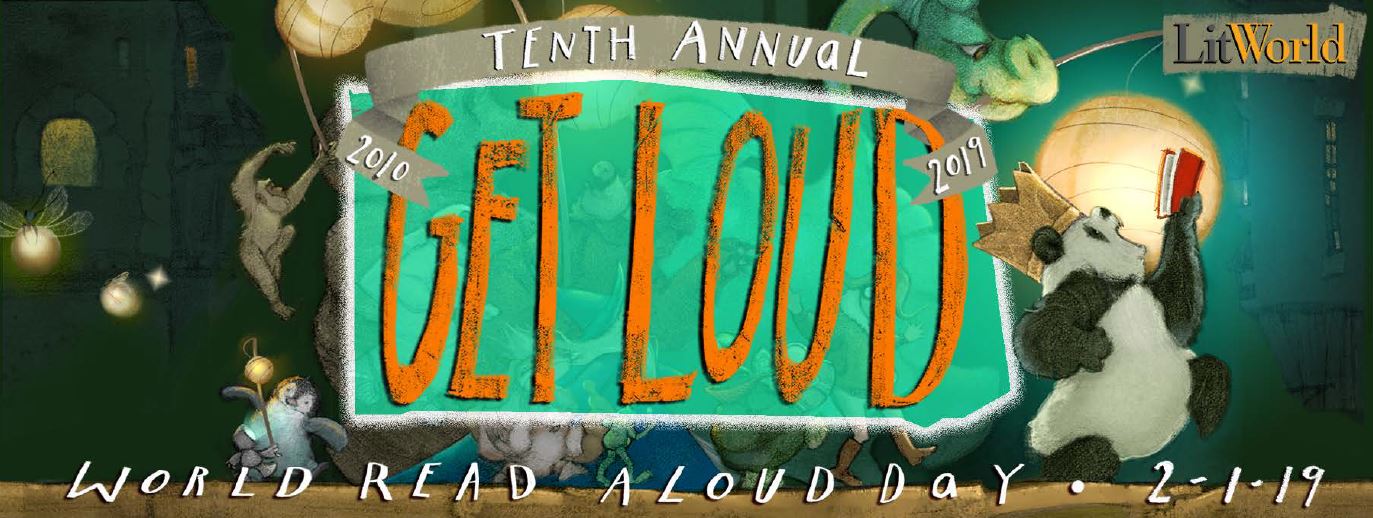 Ask a Tech Teacher contributor, Sara Stringer, has a good article this month on literacy among children and how to improve the dismal statistics:
Ask a Tech Teacher contributor, Sara Stringer, has a good article this month on literacy among children and how to improve the dismal statistics:
In the Middle Ages, literacy was highly valued. People yearned for literacy then, the way an average American might yearn to win the lottery today. For instance, Charlemagne, the first Holy Roman Emperor crowned in 800 AD, was admired as much for his ability to read as for his military victories. However, he never did learn how to write, claiming that he never quite got the hang of it, and he left that to the monastic scribes.
In the Middle Ages, literacy was highly valued. People yearned for literacy then, the way an average American might yearn to win the lottery today. For instance, Charlemagne, the first Holy Roman Emperor crowned in 800 AD, was admired as much for his ability to read as for his military victories. However, he never did learn how to write, claiming that he never quite got the hang of it, and he left that to the monastic scribes.
The opportunity to read is no longer only something that kings and monks can do. The rare and valuable skills of reading and writing now available to almost everyone in the US can improve a person’s life in many ways. A literate person can reap the fruits of a rational life, earn more, and enjoy a higher standard of living.
Unfortunately, we have now come to take the opportunity to read and write for granted. In fact, the decline in reading ability alone in the US is alarming. Education Dive, quoting a Renaissance Learning’s 2016 report, said: “high school seniors are reading at a 6th-grade level, and only 9% of students in high school read texts above a middle school complexity level of 8, leaving students ill-prepared for college-level reading at about 13.”
How can a school readiness program assist in preparing young children to avoid falling into a cultural cycle of declining literacy? The answer is to address the root cause of why children are reluctant to learn in the first place.
The Root Cause of Low Literacy Rates
When you research the reasons for the decline in reading skills over the last 200 years, you will hear that there are two root causes.
The first is an increasingly dysfunctional and underfunded educational system that does not teach children to read. By focusing on sight reading rather than phonics, it appears harder to teach reading fluency, and by depriving teachers of educational resources to work with it’s harder for them to be effective.
The second is a telecommunication technology. For one thing, smartphone communication emphasizes texting slang over the use of proper sentences. For another, when it comes to learning new information on the internet, people generally prefer audio and video communication over reading; additionally, written communication on websites is simplified to the 4th or 6th-grade reading levels.
While it’s hard to argue that these aren’t formidable obstacles to spreading literacy, they are not the root cause.
What, then, is the root cause?
It is disinterest in learning.
Even if the education system became more efficient and telecommunication technology emphasized text over audio and video, we might still have a problem of declining literacy. It might not be as acute, but it would still be alarming.
Unless someone loves to learn, improvement in external educational inputs is only going to make a slight improvement.
Indifference to learning is the primary source of low literacy, all other causes are secondary.
The solution to uprooting the cause of low literacy is to find ways of making learning fun. If learning is fun, then a young person will be engaged; and, as a result of enjoying the experience, they will be motivated to learn more.
How to Make Learning Fun
In the age of computers, there is no reason why teaching children to read and write should not be fun.
Here are two ideas for making learning fun:
- Encourage students to blog.
Blogging has become an education tool. It can improve both reading and writing skills. Reading and writing are two sides of the same coin. Reading helps you to discover new ideas while writing helps you to express the ideas you’ve discovered as well as extrapolate on them. Students who blog improve spelling and grammar, which, in turn, makes it easier to comprehend reading material. Additionally, they will want to mine articles and books for ideas to use in their blogs.
- Visit sites that are fun, but education oriented.
Like a huge city, the internet has good and bad neighborhoods. Finding the right neighborhood to send a child to play is as simple as doing a Google search. The nice thing about educational websites is that they aren’t just text-based. Ideas are also illustrated via pictures, charts, infographics, quizzes, and interactive software. Social media sites can also be useful, if students are communicating in a group or forum focused on education.
Everyone deserves to have fun while learning. By reintroducing fun in learning, an innate, suppressed sense of wonder begins to assert itself again. A child who can rekindle a love of learning will go far in life. He or she will step outside the ennui that affects most young people and begin to see everything as wondrous and fascinating.
–Sara Stringer is a former medical and surgical assistant who now does freelance business consulting. She enjoys blogging and helping others. In her spare time (translation: the time spent doing what’s most important), she enjoys soaking up the sunshine with her husband and two kids.
Jacqui Murray has been teaching K-18 technology for 30 years. She is the editor/author of over a hundred tech ed resources including a K-12 technology curriculum, K-8 keyboard curriculum, K-8 Digital Citizenship curriculum. She is an adjunct professor in tech ed, Master Teacher, webmaster for four blogs, an Amazon Vine Voice, CSTA presentation reviewer, freelance journalist on tech ed topics, contributor to NEA Today, and author of the tech thrillers, To Hunt a Sub and Twenty-four Days. You can find her resources at Structured Learning.






































As a parent and a teacher, I would keep a classroom library of a variety of high interest books and magazines with a sign that said, “Please return when you are finished.” I would have fiction and non-fiction selections. Throughout a class period from time to time, I would walk over and pick up a book. “Who has read this book and what do you think of it?” If no one had read it, I would read the back cover or the first few paragraphs. Holding the book up, I’d ask, “Who would like to read it?” Usually many hands would go up and I’d hand it to one student. If no hands went up, I might say something like, “You might like it when you’re older.”
I would start the school year with several banker cardboard boxes filled with books and magazines. “We are going to do a reading journal. After reading for a while, we will write the date with the page numbers of the book you are reading. If you learn best by listening, you can try one of these audible books with earphones on the iPod. Either write a summary or else you can number from 1 to 7 and write a word, phrase or sentences: 1. WHO? (some characters) 2. WHAT HAPPENED? (plot) 3. WHY IT HAPPENED? (purpose or meaning) 4. WHERE? (setting) 5. WHEN? (setting) 6. HOW YOU REACTED? (your opinion) 7. VOC (a vocabulary word from your reading defined and used in a sentence.) Note: Students who choose to write a summary must try to include all of the numbers one through seven: 5W’s + H + V.
Then I’d say, ” Tomorrow during silent reading, I will walk around checking your journal and giving you a score of 1 to 10. If I don’t check your journal tomorrow, I check it the next class meeting. (I always keep at least one empty desk to move a student to in case a student talks during silent reading and that keeps another desk empty.) While you are writing in your journals, I will randomly call on students to stand and talk for a few minutes about what they have read so far without referring to your journal. You don’t have to like the book that you are reading and you can keep reading it or swap it for another one and record that one in your journal. As long as it is appropriate for school and approved by the librarian, you can buy or check out another book from the library. Unless to brought your own book today, check out, read and review one of my books or magazines until obtain your own approved book.
From preschool through college, I’ve had students say that this is the first time that they have enjoyed reading because they could choose and share books with others that they enjoy.
For middle school and elementary school, I read part of the “Choose Your Own Adventure” books with about 20 different endings and ask who wants to read this book. Usually lots of hands go up.
Reading is really about interest and the growth in reading interests.
I’m in the middle of writing a book for teachers and parents about this topic. Email me at teachersask@yahoo.com if you would like to proofread my drafts.
I also have a blog at readingsplusreviews.blogspot.com Every teacher can make reading of their subject fun and interesting.
Good summary, Rich. I like that you remind students they don’t have to like the book. Who likes every book they read? It gives them an alternative other than ‘stop reading forever’!